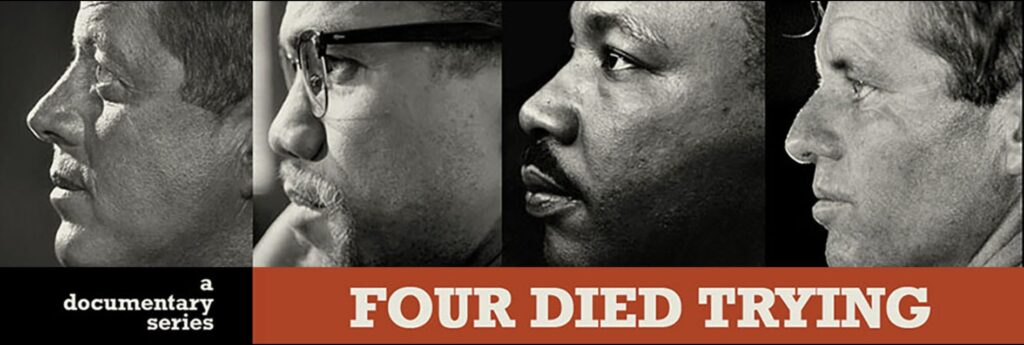
In this exclusive interview, we talk with John Kirby, the director, and Libby Handros, the producer, to delve into the intricate layers of their documentary series, which explores the assassinations of four influential political figures in American history: John F. Kennedy, Robert F. Kennedy, Malcolm X, and Martin Luther King Jr. From their motivations for embarking on this compelling journey to the challenges they encountered during the seven-year production process, Kirby and Handros provide captivating insights into their collaborative approach and the transformative impact they hope to achieve with their work.
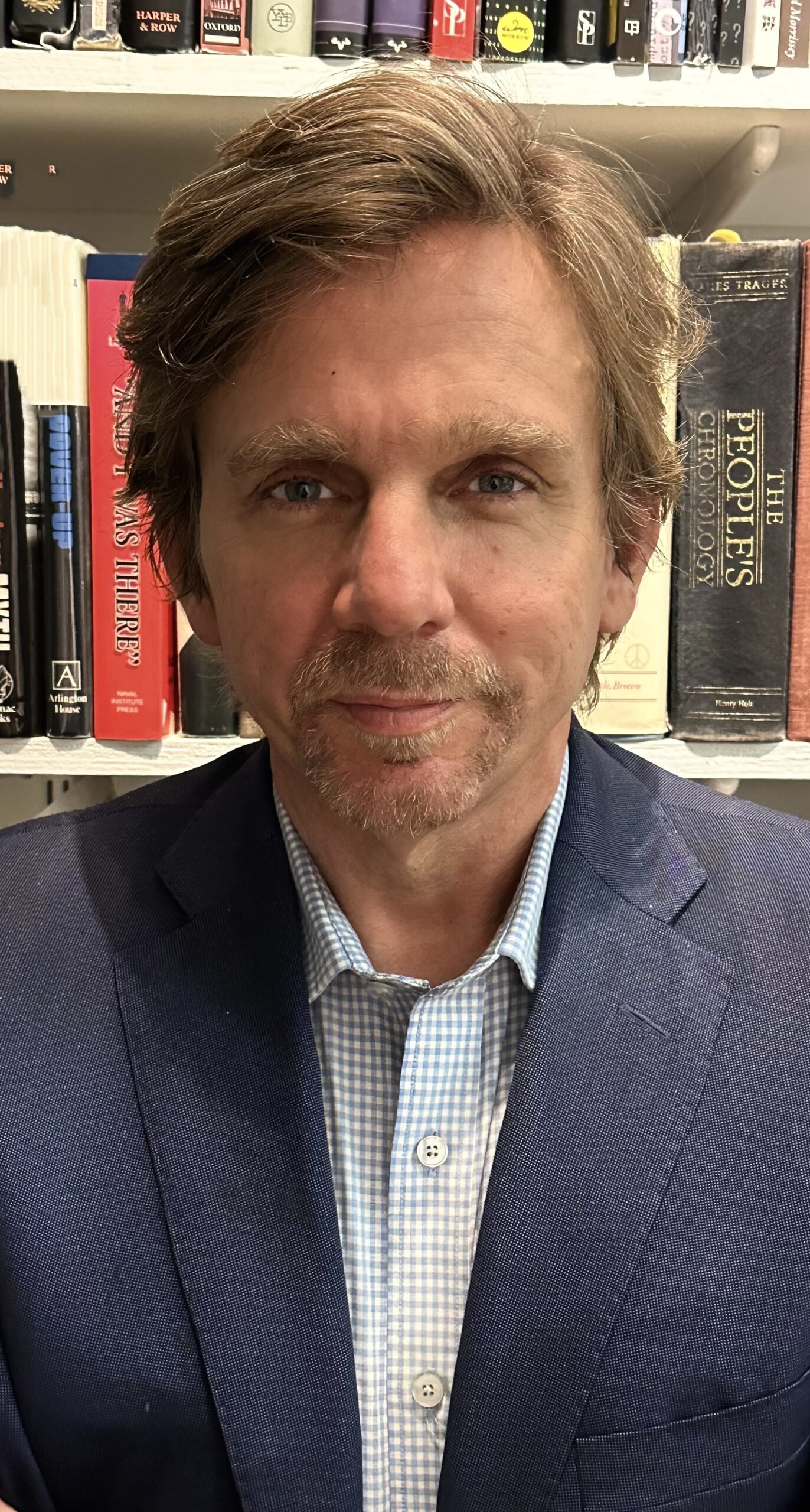
Questions for director John Kirby
Diana: How did the collaboration between you and Libby Handros influence the approach and execution of “FOUR DIED TRYING”? How did you initially get approached for the project?
Libby’s political education began early: As a 7-year-old, she campaigned door to door for Eugene McCarthy in the arid suburbs of Arizona. As for me, my father served in President Kennedy’s administration, beginning as an intern in the Civil Rights division of the Department of Justice.
While neither Libby nor I are easily categorizable politically, we each have our own particular obsession with the 1960s. Libby comes at it from a broad base of biography and respectable histories; I come at it from the fringe. As time has gone on, we’ve learned a lot from each other. Whenever we consider a topic or interview, our individual and sometimes contrasting vantage points complement each other.
In 2016, we were approached by executive producer Mark Gorton via a mutual friend. Mark had a fascinating initial concept, or question really: “What do the children of the major assassinated figures of the 1960s think about what happened to their fathers?” Libby and I began attempting to answer that question — and as we did, the project grew beyond what any of us could have imagined.
Diana: With such a vast amount of historical material available, how did you approach the challenge of distilling these complex narratives into a cohesive and engaging documentary series?
It’s a matter of using a particular framing. If an anecdote or interview has something to do with the real reason these leaders were killed, it goes in. As Martin Luther King III told us, “My father wasn’t killed because he wanted people to sit together at a lunch counter.” King was killed for challenging the political-economic structure of the country across racial lines, and for standing up to the war machine in the last years of his life.
That is our frame, and the archival materials and interview topics within and around that frame are what we’re bringing to the fore. Along the way, we hope our audience learns something — not just about what these men died for back then, but also what we should all be living for today.
Diana: Can you share any specific challenges you encountered during the seven-year production process, and how you overcame them? How did the scope and vision of “FOUR DIED TRYING” evolve during the seven years?
As mentioned above, our series began with a single question. It also began as a single film. But we soon realized that there were many important people we needed to talk to before time took them away.
Topics came up that we hadn’t anticipated. (The connection between John Kennedy’s Irish background and his vocal anti-colonialism comes to mind.) So even though our basic frame remains the same — “What were these men doing in the last years of their lives that threatened the powers that be?” — the story keeps expanding as our understanding continues to deepen.
Of course, the biggest challenge to our production during these past seven years was the pandemic lockdown, which created serious challenges for our filming schedule. Many of our interviews had to be conducted semi-remotely, with a live crew onsite but with Libby and me FaceTiming from New York — never as good as being in person. But that was the least of the problems that resulted from the “New Normal,” and we did our best to adjust and adapt.
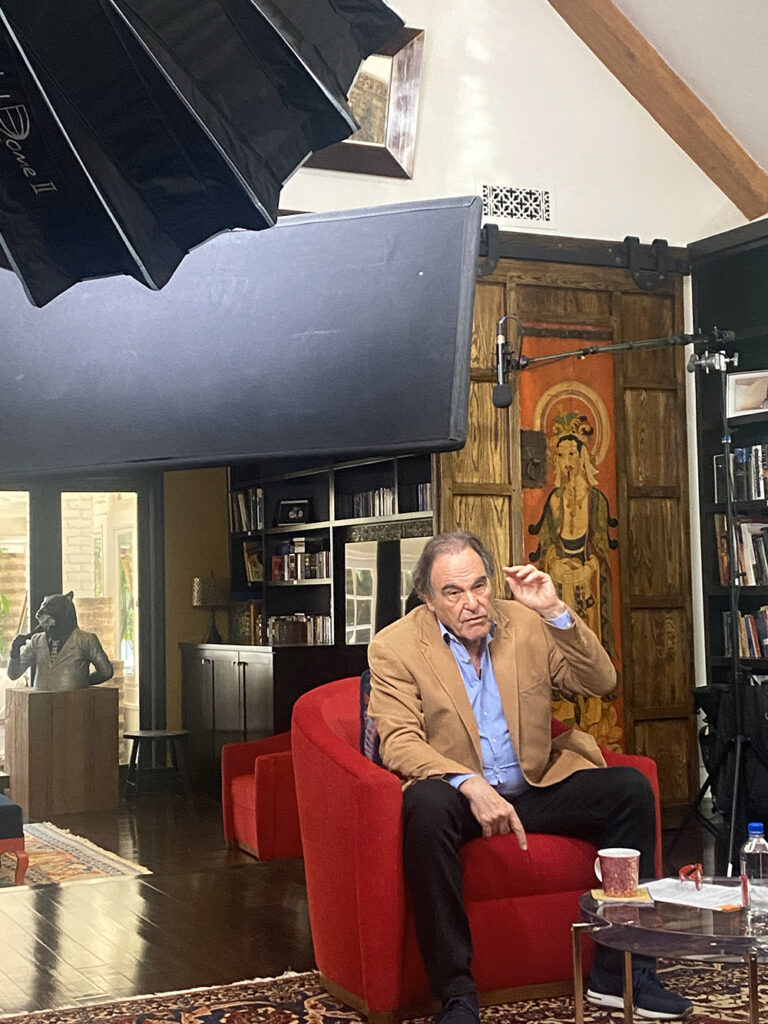
Diana: In conducting over 120 interviews, were there any particularly memorable moments or unexpected revelations that stand out to you?
Too many to mention. Some exist on a philosophical plane, such as when the godfather of all Kennedy-assassination researchers, Vince Salandria, taught us the concept of a “false mystery.” And our realization that many former government employees had honestly convinced themselves the official story was true, despite all the easily accessible evidence to the contrary. And surprising direct statements like the one from a group of Bay of Pigs veterans, who called Kennedy “a coward or a traitor” because he hadn’t fallen for the CIA’s plan to lure him into an invasion of Cuba.
Castro’s mistress (and would-be assassin) told us she had been “MKUltra’d.” Oswald’s coworker told us he’d seen a man in a sharp suit put a rifle in a trunk. An eyewitness of Malcolm’s assassination told us he’d seen one of the assassins in the police station a few moments after the shooting, hanging out like he was one of the boys. A man who reported on Robert Kennedy’s death at the time told us of meeting a woman who claimed she’d invited a friend, in advance, to see “the killing of Robert Kennedy.” And countless other things too numerous, terrible and complicated to mention here.
Diana: How did you navigate the complexities of gathering evidence suggesting government involvement in the assassinations? Did you encounter any resistance or challenges from government agencies or officials in accessing information or conducting interviews related to the assassinations?
The evidence that these four murders were acts of state is right there for all to see, in government documents and in the public record of officials’ actions and inactions. No other proof is needed. These murders are, as alluded to above, “false mysteries.”
For example, the Warren Commission, which allegedly investigated Kennedy’s assassination, issued a report that contains within its 26 unindexed volumes all of the eyewitness testimony one could possibly need in order to conclude not only that Kennedy was shot from multiple directions (by definition a conspiracy), but that, by willfully neglecting the evidence, the government was complicit in the coverup.
Vince Salandria used an important and deceptively simple Q and A technique to look at events like these assassinations. He called it the “honest government test.” In the case of the president’s murder, it might go something like this:
Q: Immediately after a president’s assassination, would an honest government send the presidential limousine — the de facto crime scene — back to the Ford Motor Company to have all of the bullet holes, stains and other forensic evidence wiped out? A: No — but our government did that.
Q: Before any investigation had occurred, would an honest government have announced to Cabinet members that they’d caught the perpetrator and were certain he’d acted alone? A: No — but our government did that, just one hour after the arrest of Lee Harvey Oswald.
Q: Would an honest government have allowed the alleged “lone nut” killer of a president — perpetrator of the most significant American crime of the 20th century — to himself be killed on live TV while in police custody, thereby denying the world the revelations that a trial might have produced? A: No — but our government did that.
There are countless examples of governmental failure of honesty in every murder our series focuses on. In one sense, the government isn’t hiding anything at all. They are counting on us to feel helpless in the face of their ruthlessness.
Thus far, we’ve had no direct contact with government agencies while making our film series. But Big Tech, in collusion with the government, did suppress our other series, Perspectives on the Pandemic, by openly censoring it after it had gotten millions of views. We also suspect that they shadow banned it.
Similar things are occurring with Four Died Trying, too. For example, a major platform spent almost two months “hand checking” our Prologue because they said it contained “controversial material.” That delay cost us massive amounts of much-needed revenue, and ultimately compelled us to launch a Patreon campaign.
The same platform also inexplicably replaced the word “died” with the word “sided” in their URL for our film, making it very difficult to locate the Prologue on their site. Who knows how many views that cost us?
Diana: What do you hope viewers will take away from “FOUR DIED TRYING,” and what impact do you hope the series will have on public understanding and discourse?
What made the Kennedys, King and Malcolm X so dangerous to the powers that (shouldn’t) be was that they showed the rest of us, in word and deed, that we don’t need to feel helpless, and that freedom, justice and an end to senseless wars are worth risking your life for. That’s the example they set, and the one we must all follow.
The first step toward that ideal involves having the maturity to stop living in delusion about who governs us. We must realize that our rulers do not have our best interests at heart, and acknowledge that they are capable of committing unspeakable crimes in the furtherance of their own power. We need to stop being a bewildered herd and begin thinking for ourselves. To use a phrase that somehow became chic to malign during the pandemic, we need to “do our own research.”
Diana: As the director, what aspects of the project did you find most personally rewarding, and were there any moments that were particularly challenging for you?
It’s always incredible to hear someone whose words have weight tell us something that has the resounding ring of truth, and that happened over and over again. Like when Mort Sahl said, “Murder became legal that day.” And when Dick Gregory told us, “If you can’t trust the FBI — the people who say they love America — then who can you trust?”
Our interview process is long and exhausting. It starts weeks or months before the interview with the reading of a long list of books and articles, and culminates in either a marathon conversation or a time-limited sprint. There are many moving parts to a project that has the scope ours does. Our job in asking questions is to get, rather like attorneys do, the same answers our interview subjects have given previously, and perhaps to clarify and deepen them. When that works out, it is very rewarding.
Ultimately, documentaries like ours are made in the edit room. There is no narrator telling you what to think or how to make the connections. We have to put the pieces together ourselves in a way that is compelling and will make us, along with our viewers, have aha moments. When I see in a screening that we have been successful in doing that, I can feel good about the work we’ve done.
Diana: “FOUR DIED TRYING” aims to shed light on the connections between the assassinations and the actions of the American government. How do you anticipate this exploration will impact viewers’ understanding of American history and politics?
I hope we can contribute significantly to setting the record straight. As author and journalist Jefferson Morely said of our series, we are making the assassinations of the 1960s a central, not an incidental, feature of America’s recent history. Too many intellectuals, journalists, politicians and historians have tried to downplay the impact these murders had on policy and the course of American history that resulted.
Aside from those writers and others who are directly owned by the intelligence community (of which I believe there were and are many), this downplaying is mainly a combination of cognitive dissonance and the unwillingness to deal with the very harsh reality these killings signify. It is hard to truly face the fact that the government we look to for protection, fairness, and the maintenance of our rights and freedoms might be our worst enemy; that it sometimes engages in “state crimes against democracy”; that it suffuses our “free press” and social media; and that it shapes our perceptions of reality in such a way that we remain stupefied and in a state of paralysis.
I hope there will be a tipping point in our willingness to remain docile and therefore complicit. I hope that the knowledge of where we’ve been (which Four Died Trying helps provide) will teach people how to deal, peacefully and effectively, with where we are now — and where we might go from here.
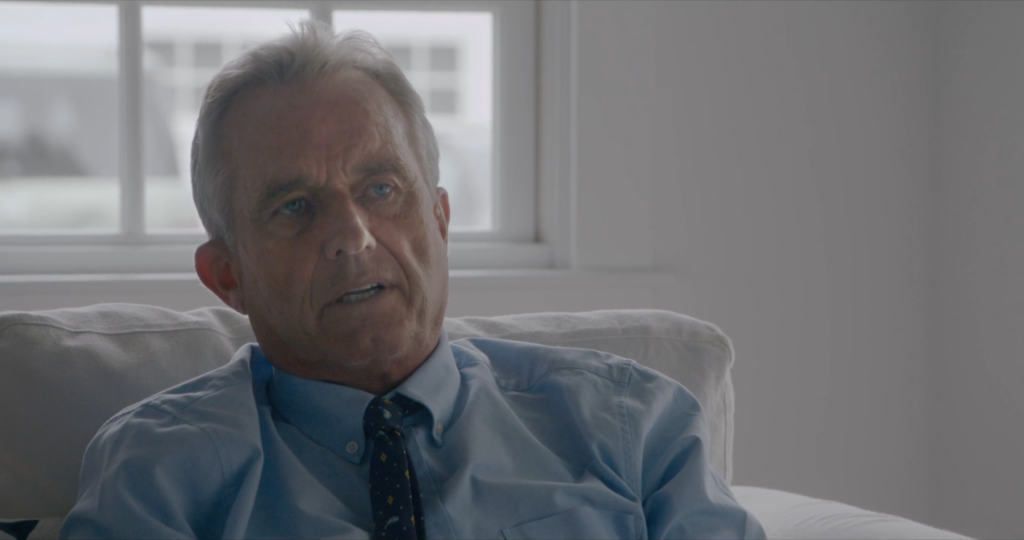
Diana: Can you discuss any decisions made during the editing process that significantly influenced the final product?
Shifting from completing a single film to producing an ongoing series with multiple chapters has transformed our project from being an interesting but ultimately forgettable one-off to being an epic reexamination of our collective past.
Once we recognized that we’d become the repository of a significant oral history — sometimes recording our elderly subjects’ final interviews on this earth — we knew we had an immense responsibility to do that oral history justice. That really hit home in the edit room. We realized that we had to do a series, and we began cutting all the footage accordingly.
Diana: Looking back on the completion of “FOUR DIED TRYING,” what do you consider to be its most significant contribution to the exploration of American history and culture?
As a series, we are far from complete. We are still filming interviews, and the next segment — Chapter 2 — is being put together right now. That being said, I am proud that the Prologue and Chapter One have already made an impact on the thinking of many.
Before my father died, I had the chance to show him an early version of our Prologue. As I mentioned, he’d been part of the Kennedy administration as a young man. He had played an important role in alerting then-Attorney General Robert Kennedy to the fraudulent literacy tests that were being administered to Black voters in Mississippi.
Throughout his life, my dad had been unwilling to discuss the assassinations with me, except to give pat answers derived from the official account. But after watching the Four Died Trying Prologue, he admitted to me that seeing the four killings together showed an undeniable pattern. And it’s not just my dad who had that reaction, either: Many other viewers who lived through that era have told us that, after watching our films, they’ve had to rethink everything they thought they knew. I could ask for no higher praise than that.
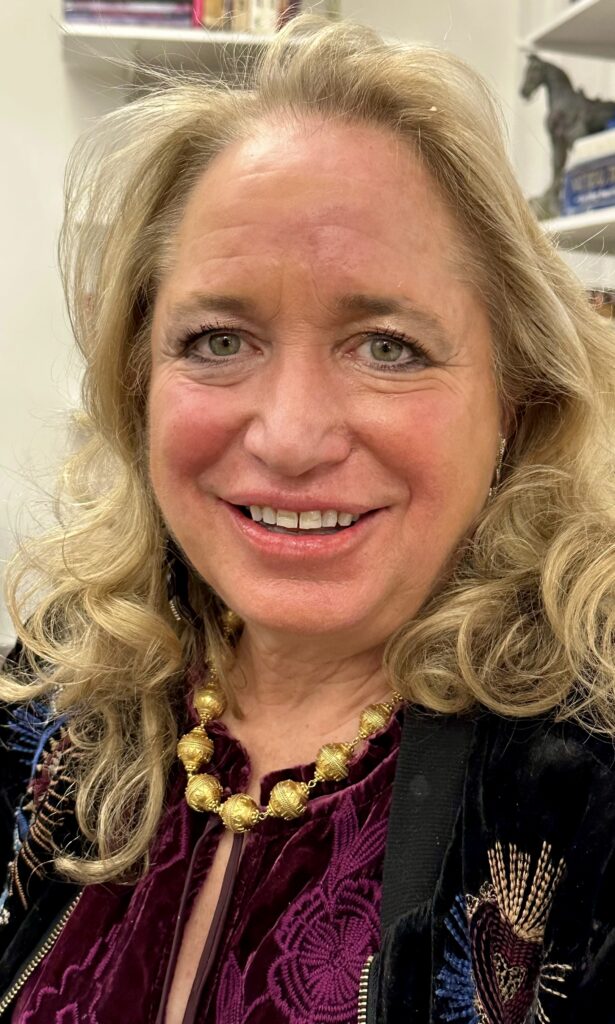
Questions for producer Libby Handros
Diana: What motivated you to delve into the interconnected stories of these four influential political figures? What aspects of their lives and legacies intrigued you the most, and how did they shape the direction of the documentary series?
I have never shied away from looking for the truth. When I first talked to Mark Gorton, our executive producer, in 2016, the idea of hearing what the children of the four assassinated men had to say about their fathers’ deaths seemed like a natural progression in my career. I was surprised to learn how much the four men had in common. What really stood out for me was their desire for peace — and their commitment to ending war and making lasting peace is what led to their assassinations. Sadly, yesterday and today, the desire for peace is not good for one’s longevity.
Diana: As a producer with over 25 years of experience, what attracted you to “FOUR DIED TRYING,” and how did you approach the production differently from your previous projects?
I can’t point to something specific and say, “I did this or that differently.” I always let my interview subjects speak for themselves. However, I think that this time they led me in directions I hadn’t been thinking about initially. For example, I consider myself a pretty good student of history — particularly the ’60s. Yet I never knew that President Kennedy was an anti-colonialist and that, as president, he was constantly hosting state dinners for the heads of newly freed African nations. As John and I started to uncover more and more facts about the four men our series focuses on, we knew we had to expand the story. We needed to hear not just from the children of these figures, but from those who knew them well (e.g., speechwriters and colleagues), as well as first-generation assassination researchers. We realized that one key to understanding the four assassinations was to understand what the four men were doing in the last year of their lives. What could have angered the powers that be enough to kill them?
Diana: Given the sensitive nature of the subject matter, how did you navigate the complexities of producing a documentary series that delves into the assassinations of influential figures in American history?
We’ve tried to be true to the four men and to the facts. To achieve that, we knew that we had to be totally independent. While we might have liked to partner with a streamer for financial reasons, we knew that we had to maintain our editorial independence above all else. That was in 2016. We were aware that there was censorship back then. Today, the censorship industrial complex (as revealed by the Twitter Files, for example) wields a whole new level of control.
Diana: Can you discuss the collaborative process between you, the director, and the rest of the production team in shaping the narrative and structure of the series?
John Kirby and I have been business partners for almost 25 years. He’s not just the director, he is also the lead editor. We work together in shaping the story, choosing our interview subjects and doing the interviews. It’s a successful collaboration because we have different areas of expertise. I hunt the interview subjects down, while John thinks about how they’ll fit into the arc of the story. Our staff backs us up. As the editing process progresses, our editors will often come to us and say, “I think we are missing something…” Filmmaking is collaboration at its very best.
Diana: With such a wide array of topics covered in your career, from public policy to sports, how did you draw on your diverse background to inform your approach to “FOUR DIED TRYING”?
Four Died Trying evolved out of all the work that I have done. With the possible exception of the sports documentaries, all of my films have focused on power. The power of the press. The power of propaganda. The power of money. The power of Big Oil and Big Pharma. Et cetera.
Diana: Given the extensive research involved in producing a historically accurate documentary, what were some of the most surprising discoveries you made during the course of filming “FOUR DIED TRYING”?
To begin with, what was astonishing — and what we didn’t realize until we created a trailer that we started to show people — was that all four men draw strength from each other as the director’s father noted. In their own ways, they were all talking about the same issues, and it becomes more obvious what happened to each of them when you look at all of them together.
Also revelatory for today’s audience is the level of the men’s rhetoric. No one today speaks like these leaders did. They were so eloquent, so articulate. It is a joy to listen to them. We’re going back and finding all of their speeches and press conferences so our audience can get a sense of who they were and what they were trying to do.
Malcolm X was the person I was least familiar with when I began this project. I had no idea that he’d spoken out against the war in Vietnam long before King did, and long before it was chic to do so. I also didn’t know that King himself had been quite radical in his early years. Being a civil rights leader tempered some of his radicalism, but in the last year of his life — starting with his Riverside Church speech — the firebrand in him was coming out again. His Poor People’s Campaign was going to be all-inclusive: whites, Blacks, brown people, all races and ethnicities. The prospect of all those people descending upon Washington scared the living daylights out of America’s entrenched ruling class. There is nothing the deep state hates more than people of different backgrounds joining together for a common cause.
Diana: As a producer, what were some of the logistical challenges you faced during the seven-year production process, and how did you manage to overcome them?
I had no idea how hard it was going to be to secure all the interviews we’ve gotten. I have no idea how we’ve managed to do more than 120, because very few people said yes the first time we asked them to participate. But I never take no for the first — or even tenth — answer. Persistence pays off.
Diana: On one hand the events which are depicted in the film happened a long time ago, however many things haven’t changed, and crimes of the American government are often swept under the carpet and people are often silenced who wish to tell the truth. Do you foresee any potential repercussions or pushback from government entities or officials following the release of “FOUR DIED TRYING” and its exploration of government complicity in the assassinations? Did you face censorship regarding your work in American media?
My work has been censored quite a few times, in different ways. In the ’90s, I did a film on Donald Trump called Trump: What’s the Deal? It was suppressed because Trump threatened to sue anyone who showed it. That’s one example of censorship. The film is now available online.
Four years ago, John and I did a series called Perspectives on the Pandemic. We were among the first to hit the Web with an interview series offering perspectives on COVID that differed from the stories being told by the mainstream media. We interviewed virologists, doctors, nurses, and more. Our first interview, with Stanford University’s John Ioannidis, took place in March of 2020. At the time, he was the most respected statistical epidemiologist in the world. But then he had the audacity to question COVID’s fatality rate — so he got cancelled. Our interview with him went from having millions of views on YouTube to suddenly just being gone. It disappeared from the site completely.
We were among the first to be shadow banned and blocked, before anyone even knew there was something called a “censorship-industrial complex.” We kept getting blocked, but we kept going anyway. It was harder to reach people without YouTube, but we did our best. We ended up releasing 27 episodes.
Censorship, whether it be overt or covert, has existed ever since this nation was formed. It waxes and wanes with events. Who can forget the jailing of Eugene V. Debs for daring to espouse what was deemed a socialist philosophy at the time? It has been shown over and over again that the legacy media in this country is in the government’s pocket. Certain reporters are even on the CIA’s payroll.
I’m an old-fashioned reporter who doesn’t express her political views publicly, or let them affect her work. It should just be the facts. I have been appalled watching how both Donald Trump and Bobby Kennedy Jr. have been vilified by the media. I support people’s right to pick the candidate of their choice without being called ugly names in the press. Free speech is not always pretty. That is the point.
If you think about it, the First Amendment is an incredibly radical document. The framers were very smart, and they understood the importance of free speech. I believe in the sanctity of the First Amendment above all else — and these days, the First Amendment is under constant assault.
Diana: Can you discuss the role of storytelling in documentary filmmaking and how you worked to engage audiences while grappling with complex historical subject matter?
Storytelling is the essence of all filmmaking. Sure, a nonfiction-documentary narrator can drone on and tell the audience something important. But only the most committed viewers will listen. A good story will always engage the audience, and a good story starts with the interview. Each interview should tell a story and have a beginning, middle and end. That makes the editing so much easier. It becomes a question of just fitting the pieces of the puzzle together.
Diana: Looking back on your career, what do you consider to be the most rewarding aspect of producing documentaries, and how does “FOUR DIED TRYING” fit into that broader narrative of storytelling and exploration?
Meeting all the wonderful and accomplished people I’ve met over the years: politicians, authors, baseball players, World War II codebreakers and just plain, ordinary people. But then again, no one is just “ordinary.”
As our tagline says, “To see where we are, look where we’ve been.” The framers of this nation gave us an amazing foundation. Then there was a coup in 1963, and nothing has been done to redress it. Every terrible thing that has happened since then politically is a result of that fateful day in Dallas. Kennedy would have kept America out of the war in Vietnam, which ruined this country. We are still living with the aftermath of that war. If Four Died Trying, in some small way, can wake people up so they understand that they have the power to throw the bums out of office — and that there was a time when people spoke about a better world — then I will have done my job.
FOUR DIED TRYING is now available on Amazon Prime, Apple TV, Google Play, and other platforms
https://www.amazon.com/Four-Died-Trying-John-Kennedy/dp/B0CHZ6MMJR
